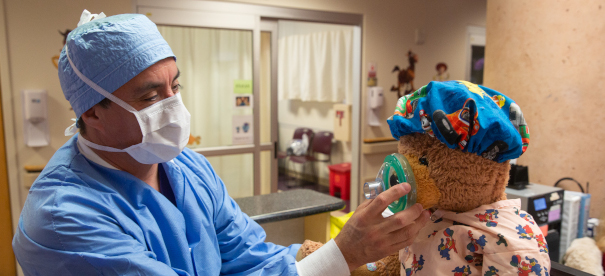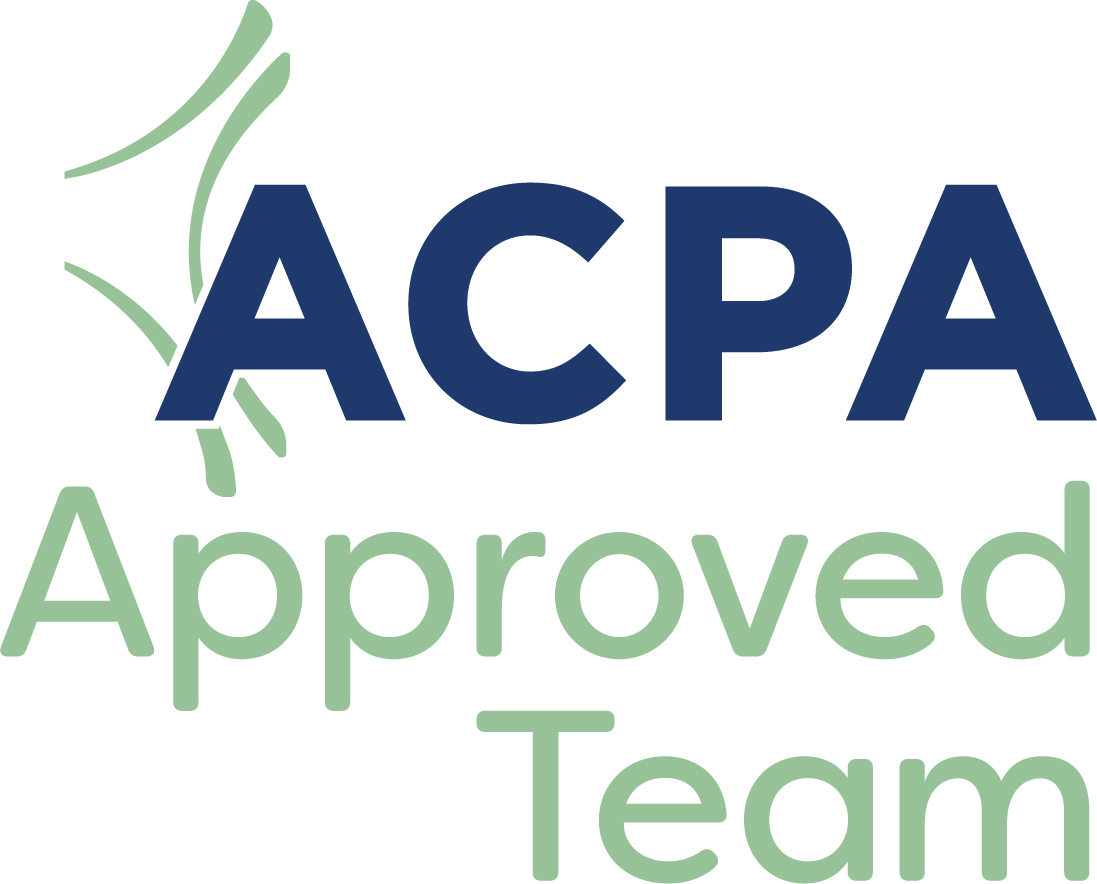
Cleft and Craniofacial Team
The UNM Cleft Team is a multidisciplinary team that is approved by the American Cleft-Palate Association. We care for patients from birth to 21 years of age. The team provides assessment, diagnosis, education, and treatment for children with the following diagnoses.
- Cleft lip
- Cleft palate
- Submucous cleft palate
- Velopharyngeal incompetence or insufficiency (VPI)
- 22q11.2 syndrome
- Microtia
- Craniofacial macrosomia
- Pierre Robin sequence
- Stickler syndrome
Services Provided Include
 ACPA Approved Team
ACPA Approved Team
UNM Cleft and Craniofacial is an ACPA Approved Team and has met the Standards of Team Care for Cleft and Craniofacial Teams set by the American Cleft Palate-Craniofacial Association (ACPA). The ACPA Commission on the Approval of Teams has determined that UNM Cleft and Craniofacial is capable of providing cleft and craniofacial care in a coordinated and consistent manner, that care provided by UNM Cleft and Craniofacial follows the proper sequence and takes place within the framework of the patient’s overall developmental, medical and psychological needs. All approved teams in the U.S. and Canada are listed on the ACPA website.
Frequently Asked Questions
Timeline of Care during the First Year
Babies born with cleft lip and palate should be seen by our team after they go home from the hospital, usually within a few weeks. They should see their primary care provider at least once per week for weight checks for the first few months of life. The main focus during this time is to support feeding. Our team’s speech pathologists are available to answer feeding questions or see babies for frequent visits if needed.
Newborn hearing screen:
- We will check the results of your baby’s newborn hearing screen at their first appointment with the Cleft Team. If they did not pass, we will help set up a more sensitive hearing test to be done in the next few months.
Naso-alveolar molding:
- Some babies with severe cleft lip can benefit from lip taping or naso-alveolar molding (NAM). This technique can be used to slowly mold the tissues of the nose and lip into a better position prior to surgery. This device is worn by the baby for several months and is adjusted weekly.
Surgical repair:
- The goals of cleft lip surgery are to close the cleft lip with minimal scarring, to create a natural appearance, and to ensure typical growth of the face. The goals of cleft palate surgery are to close the cleft in the palate so that it can function normally during eating, drinking, and talking.
Lip repair:
- The usual timing of the lip repair is between 4 and 6 months of age. Before surgery, the baby must be healthy and growing well. The surgery will be done under anesthesia, and takes several hours. The baby will stay overnight in the hospital afterwards.
- The baby will have sutures and tape covering the lip afterwards. The sutures will be removed in the operating room one week later. This is a short procedure, and they will go home afterwards.
- They can continue using their same bottle after surgery. You will be taught how to care for the lip before going home from the hospital.
Palate repair:
- Repair of the palate is usually between 10 and 14 months of age. Before surgery, the baby must be healthy and growing well. The surgery will be done under anesthesia, and takes a few hours. The baby will stay overnight in the hospital afterwards.
- They will hopefully be weaned from a bottle before surgery, but this may not be the case for every baby. They will be given a special cup to use called a “nosey” cup. This helps them drink without causing trauma to the palate. You will be taught what foods and drinks are safe before going home from the hospital.
Timeline of Care during the First Year
Babies born with cleft lip and palate should be seen by our team after they go home from the hospital, usually within a few weeks. They should see their primary care provider at least once per week for weight checks for the first few months of life. The main focus during this time is to support feeding. Our team’s speech pathologists are available to answer feeding questions or see babies for frequent visits if needed.
Newborn hearing screen:
- We will check the results of your baby’s newborn hearing screen at their first appointment with the Cleft Team. If they did not pass, we will help set up a more sensitive hearing test to be done in the next few months.
Naso-alveolar molding:
- Some babies with severe cleft lip can benefit from lip taping or naso-alveolar molding (NAM). This technique can be used to slowly mold the tissues of the nose and lip into a better position prior to surgery. This device is worn by the baby for several months and is adjusted weekly.
Surgical repair:
- The goals of cleft lip surgery are to close the cleft lip with minimal scarring, to create a natural appearance, and to ensure typical growth of the face. The goals of cleft palate surgery are to close the cleft in the palate so that it can function normally during eating, drinking, and talking.
Lip repair:
- The usual timing of the lip repair is between 4 and 6 months of age. Before surgery, the baby must be healthy and growing well. The surgery will be done under anesthesia, and takes several hours. The baby will stay overnight in the hospital afterwards.
- The baby will have sutures and tape covering the lip afterwards. The sutures will be removed in the operating room one week later. This is a short procedure, and they will go home afterwards.
- They can continue using their same bottle after surgery. You will be taught how to care for the lip before going home from the hospital.
Palate repair:
- Repair of the palate is usually between 10 and 14 months of age. Before surgery, the baby must be healthy and growing well. The surgery will be done under anesthesia, and takes a few hours. The baby will stay overnight in the hospital afterwards.
- They will hopefully be weaned from a bottle before surgery, but this may not be the case for every baby. They will be given a special cup to use called a “nosey” cup. This helps them drink without causing trauma to the palate. You will be taught what foods and drinks are safe before going home from the hospital.
